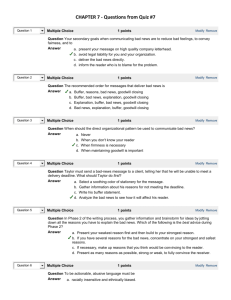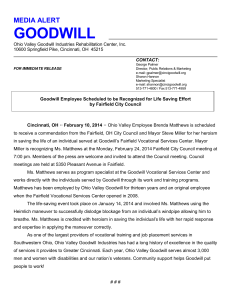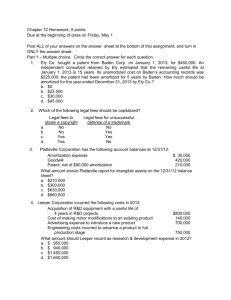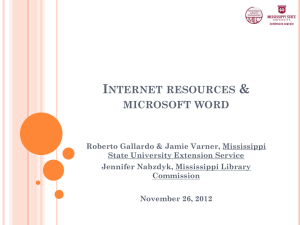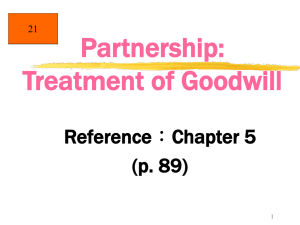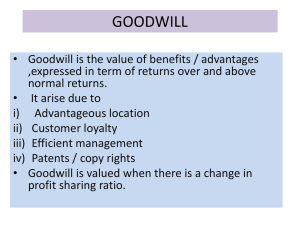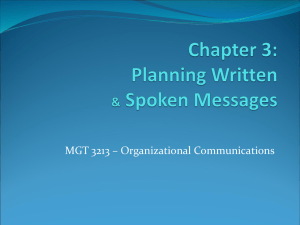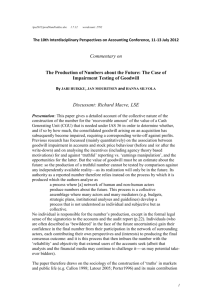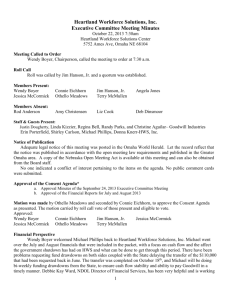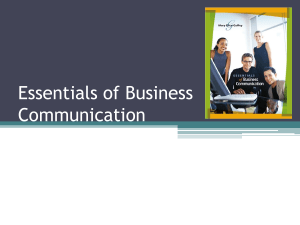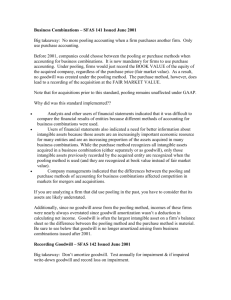Chapter 6 - Wright State University
advertisement
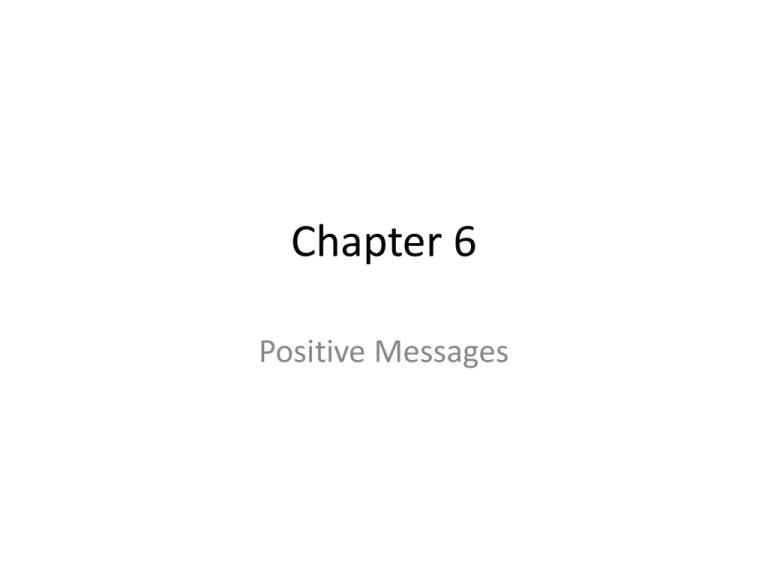
Chapter 6 Positive Messages • Routine Letters and Goodwill Messages (p. 142-143) – Letters are primarily external documents – Sent to: • • • • Suppliers Government agencies Other businesses Customers (most important) – The most emphatic positions in letters are the openings and closings – Good for the following: • • • • Creating a permanent record Lending confidentiality Conveying formality and sensitivity Delivering persuasive, well-considered messages Direct Requests and Response Messages (p. 144-146) • Opening – Opening and closing are most emphatic positions – Ask the most important question first or express a polite command (in the form of a rhetorical question. Do not use a question mark.) • Body – Explain request logically and courteously – Ask other questions if necessary – Use graphic highlighting to increase readability • Closing (see p. 146 for tips) – Request a specific action with an end date, if appropriate, and show appreciation – End courteously – Avoid clichéd closings • Thank you for your cooperation, (trite) • Thanking you in advance, (trite and presumptuous) • If you have any questions, (suggests your message wasn’t clear) Responding to Requests (p. 146148) • Written in response to requests for information or action • May include a Subject Line below the salutation to identify previous correspondence and/or refer to the main idea (optional in a memo) • Opening – Deliver the most important information first – Avoid wordy, drawn-out openings – Announce good news immediately • Body – – – – – – Check facts and figures carefully (if appropriate) Arrange information logically Use graphic highlighting to increase readability Explain and clarify information Provide additional information (if appropriate) Build goodwill • Closing – End pleasantly, and offer help to the reader – Avoid clichéd closings Instruction Messages (p. 148-150) • • • • Follow direct organizational strategy Use plain English Be clear Outline steps to be taken to complete a task • Writing Plan (p. 148): – Subject Line: Briefly summarizes message – Opening: State main idea concisely – Body: Divide instructions into steps in the order in which they should be completed • Use bulleted and/or numbered lists to help you organize • Begin each list item in imperative mood (a command) – Closing: Request action, summarize message, or present closing thought (along with deadline) • Revising Instruction Messages (p. 149) – Watch tone • Tell readers what they should do, not what they shouldn’t • Do not threaten the reader • Do show how the steps will help the reader – Explain tactfully reasons for the new instructions – Make sure you use imperative mood – Make sure lists are grammatically parallel, beginning with active-voice verb Direct Claims and Complaints (p. 150-152) • Opening – Describe clearly the desired action, especially when the remedy is obvious – Ask for a change in policy or procedure, or for an explanation if the remedy is less obvious • Body – – – – – – Explain the nature of the claim Tell why the claim is justified Provide details regarding the action requested Avoid becoming angry or assigning blame Include copies of all pertinent documentation Cite names of people you spoke to and dates of calls (if appropriate) • Closing – End pleasantly with a goodwill statement – Include an end date if appropriate – Act promptly – Keep a copy of your letter or email Adjustment Letters (p. 152-154) • Three goals: 1. To rectify the wrong, if one exists 2. To regain the confidence of the customer 3. To promote future business and goodwill • Subject Line (optional) – Identify previous correspondence – Make a general reference to the main topic • Opening – Grant the request or announce adjustment immediately – Do not begin with an apology if you are complying with the request – Use positive language – Include sales promotion if appropriate • Body – Explain how you are complying with the request – Try to regain the customer’s confidence – Use positive language • Decide Whether to Apologize (p. 156-157) – If you feel an apology is an appropriate goodwill gesture, include it. – Be brief! Apologize once, and let it go. – DO NOT admit negligence. • Closing – – – – End positively with a forward-looking thought Express confidence in future business relations Include a sales promotion if appropriate Avoid referring to the unpleasantness Goodwill Messages (p. 158-161) • Written in response to: – Thanks – Recognition – Sympathy • Goodwill messages should be: – – – – – Selfless Specific Sincere Spontaneous Short • Thank-You Notes (p. 158-159) – Direct opening – Special notebook paper or heavy cardstock – Written in response to: • Gift • Favor • Hospitality • Responding to Goodwill Messages (p. 160) – Rude not to respond to recognition – Written to: • Answer congratulatory note • Respond to pat on the back • Conveying Sympathy (p. 160-161) – Refer to the death or misfortune sensitively – Praise the deceased in a personal way – Offer assistance without going into excessive detail – End on a reassuring, forward-looking note Is Email Appropriate for Goodwill Messages (p. 161) • Handwritten messages more impressive • Email appropriate if: – You frequently communicate with receiver via email – You precede a phone call or a handwritten offering condolences – You immediately follow a condolence email with a handwritten note

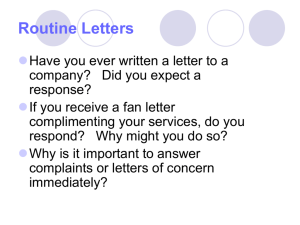

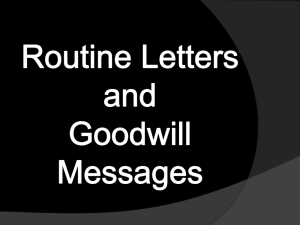
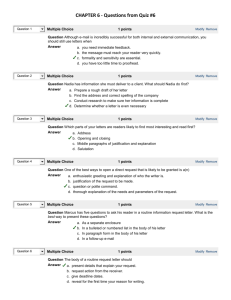
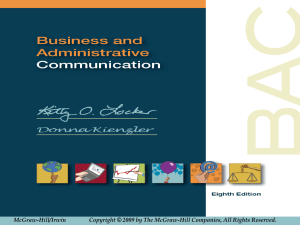
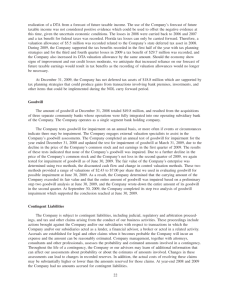
![Quiz chpt 12 13 Fall 2009[1].doc](http://s3.studylib.net/store/data/008065145_1-9341d7c32393454ecadd4d67922dfd05-300x300.png)
